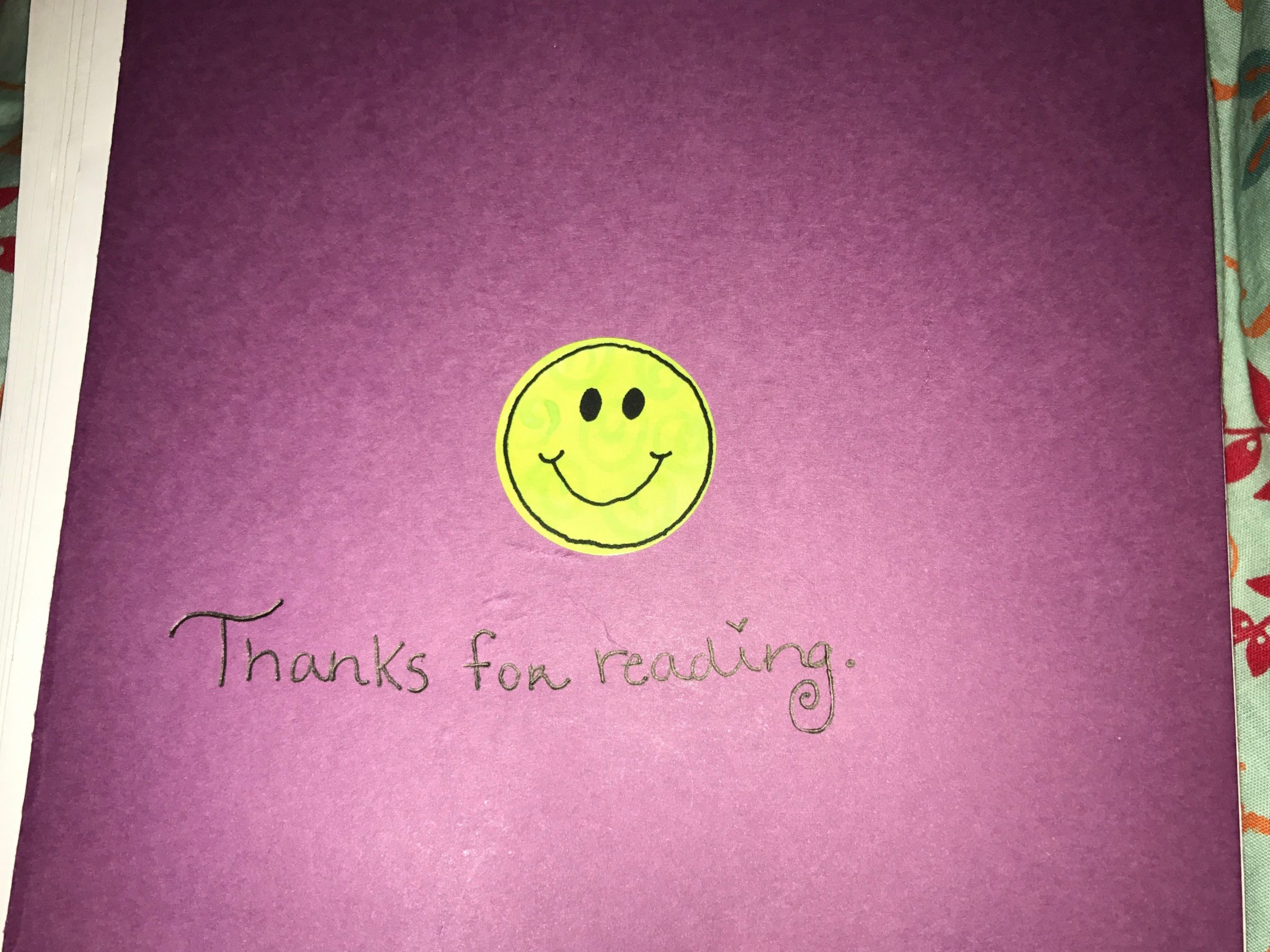How the Sunflower got its Name- Final Reflection
For this project, I wanted to make a children’s book with a story I wrote. I wrote the story around the book requirements. Most of the requirements were easy to incorporate like the exclamation point, the spider, and the color blue. Finding a word in another language to include stumped me until I thought about my books topic. Since I was writing about the sunflowers, I used the Spanish word for sunflower.
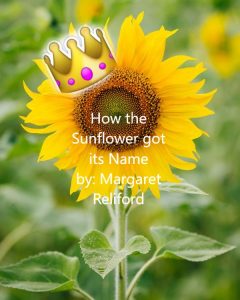
This will be the cover of my book.

The color Blue.
I wrote the story and used my photo editor to make pictures for my book. All of this made up my first prototype. My decision to make those first came from thinking about how I wanted my book to look. I figured there was no need to bind a book together if I wasn’t sure I’d have enough pages. In my story, there is a part about a sunflower field and I though that would be best on a page that pulls out. We made an accordion fold for pull out pages in class, so I put that with the other papers I was including in my book.
For my second prototype, I began to outline where things would go in my book. The pictures were a little too big the first time I printed them so I decided my book would have a horizontal layout. Paper clips held the text and pictures in place. I didn’t want to tape everything down immediately because I was still editing the story and looking for more pictures.

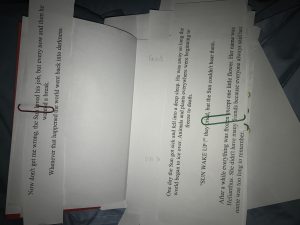
My third prototype is where I started putting things together. It was good that I hadn’t taped anything down or bound the pages because I ended up switching back to a vertical layout. When I did that, I didn’t have enough pages to support all of the text and pictures. This also meant that the outline that I did in prototype two no longer worked. I switched from a horizontal layout back to a vertical layout because I couldn’t figure out how to make my pull out page look the way I wanted it to with the picture I chose. My goal was essentially to redo my outline.
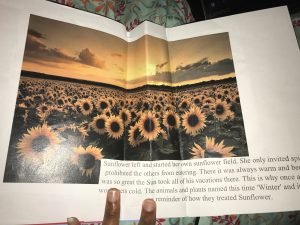
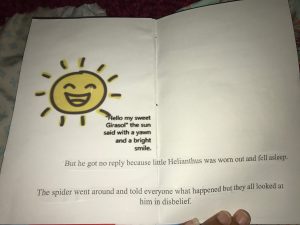
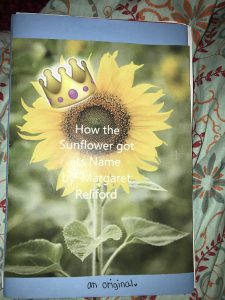
For my final booklet, I spent the majority of my time focusing on how my book looked. The process started out with me cutting out each individual sentence and taping those down but I am still terrible with scissors. Cutting the sentences together was more effective because it saved time and looked better. Most of the goals I set for my final product were achieved. For example, I wrote an original story that included all of the requirements and I found and edited pictures to go with it. I even have the pull out page with the sunflower field. However, my booklet doesn’t look as good as I hoped it would. Some of the ends of the text are rough and the pages with just text look bland. Overall I learned that making a book is hard. If I ever want to publish something, I’ll just send the pictures and texts off to someone who can put it together. On a more serious note, I learned that it’s better to do things in steps. This is because it allows you to think about what you want more. If you try to do everything together and all at one time, then you don’t leave room for changing your mind. Steps ensure that if you have an idea that was better than the original, you don’t have to throw your current product away. If I had stuck the text and pictures down the first time I did my outline, I would’ve had to start over because pulling each piece up would’ve taken too much time and eventually something would have ripped. New ideas are wonderful and while they may seem like a threat to your project, they are only there to make things better. My prototypes taught me that it’s okay to start over, because there were times throughout this process where I undid everything that was done for the recent prototype. Starting over is good because it means you can tell when something isn’t your best work. If you have an idea that is better than your current one and you don’t start over, then you are settling.
On the specifications page there, is a sentence that I didn’t understand until this project. “If you haven’t learned something in the course of writing, you probably don’t have much to teach us.” Prior to this project I probably would have told you that refusing to start over was you being happy with what you had. However, if you don’t mess up you don’t learn anything. If you do not experience frustration, then you won’t have the opportunity to learn through resolving the problem.
Work Cited:
Churchill, Suzanne. “Post Specifications – Media & Community.” Media Community. N.p., n.d. Web. 06 May 2017.
